Home » Treatment Options For Deep Vein Thrombosis: Medications, Surgery, And More
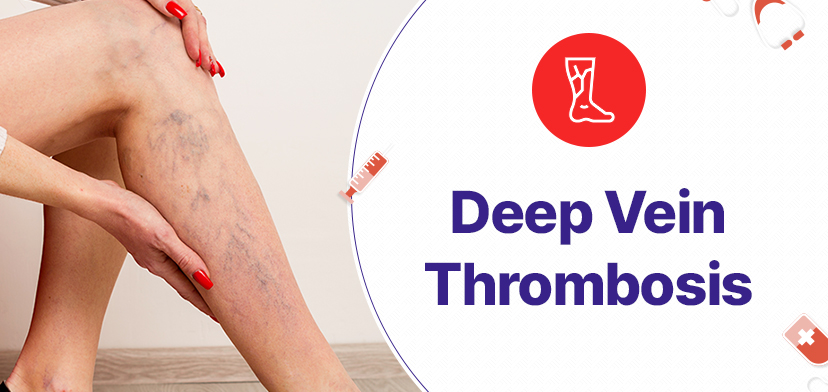
Are you suffering from deep vein thrombosis (DVT)? Does the pain trouble and affect your daily day to day life? If so, you need to get the condition diagnosed and treated before it’s too late.
Deep vein thrombosis is a serious condition that needs immediate action once identified. There are many types of treatment options available to treat DVT, such as medications, compression stockings and surgeries. This blog will help you understand your treatment options. So, keep reading this blog, and you will learn everything you need to know about deep vein thrombosis meaning, medications, surgeries, and other treatment options for DVT.
Venous thrombosis is a medical condition in which the vein is blocked by a blood clot. This limits the blood flow in the veins and often leads to severe pain and swelling. Most commonly, this venous thrombosis is observed in the “deep veins” of the legs, pelvis, or thighs. Thus, it is called deep vein thrombosis leg or DVT.
The clot in DVT occurs either due to some injury and trauma to the veins or due to the sluggish blood flow through them. These blood clots may partially or completely blog the veins leading to further complications. Though most DVT occur in the lower leg, the condition may also occur in other parts of the body, such as the brain, arm, liver, intestines, or kidneys.
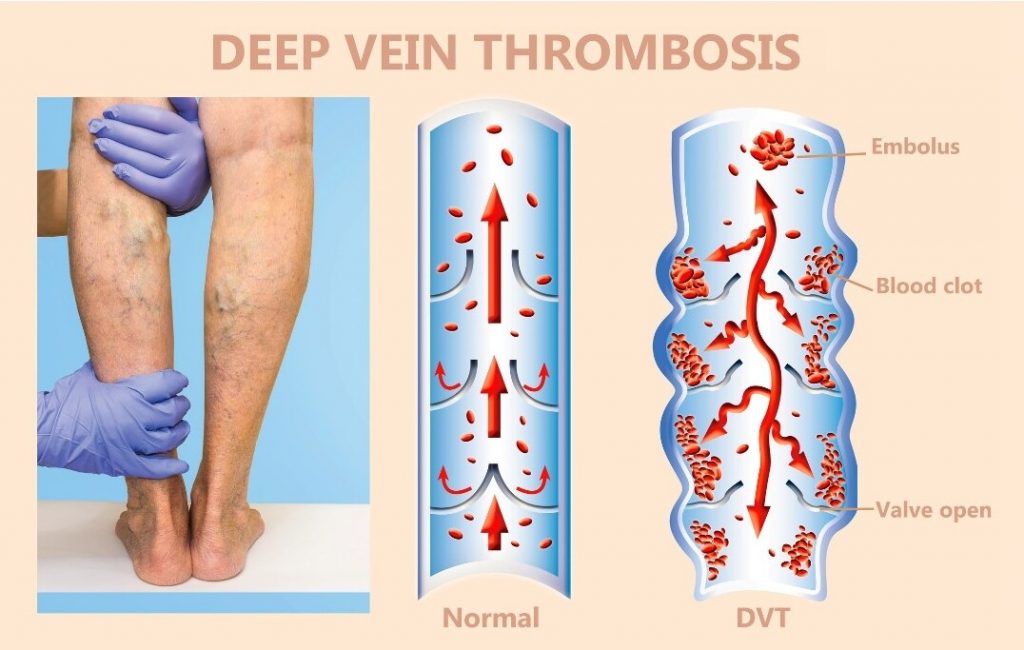
The deep vein thrombosis causes are many. The following deep vein thrombosis risk factors may lead to DVT:
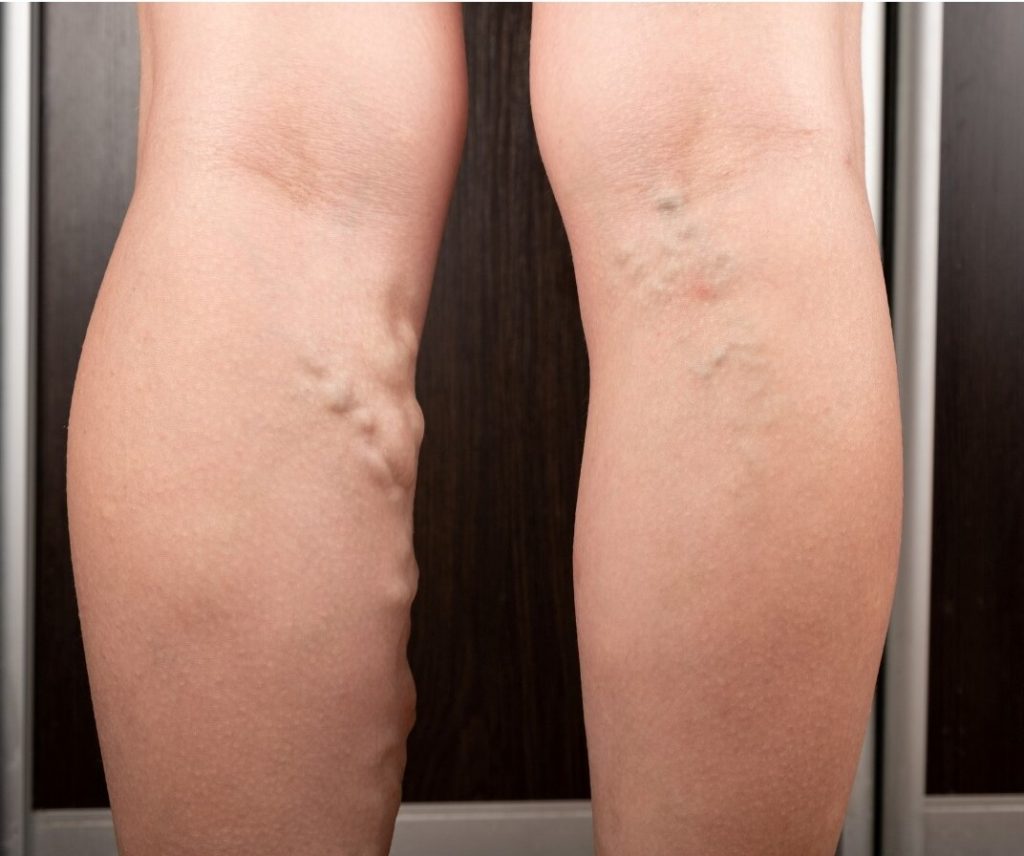
The DVT usually affects the lower legs, and thus the signs of deep vein thrombosis are usually observed in the lower body. As per the statistics, up to 30 per cent of people living with DVT show no signs or symptoms of their condition. However, other patients report an array of deep vein thrombosis symptoms, including:
Many people don’t know they have DVT condition until the symptoms become severe or the clot moves into their lungs. Once the clot travels to their lungs, it can cause pulmonary embolism (PE), which is a medical emergency that requires immediate treatment. Common symptoms associated with early PE include shortness of breath, chest pain, coughing with blood, lightheadedness and even fainting.
It’s important to get diagnosed if you or your loved one is experiencing any of the above-outlined symptoms. Don’t delay or wait to see if the symptoms resolve on their own. Take immediate action and get treated to prevent further complications.
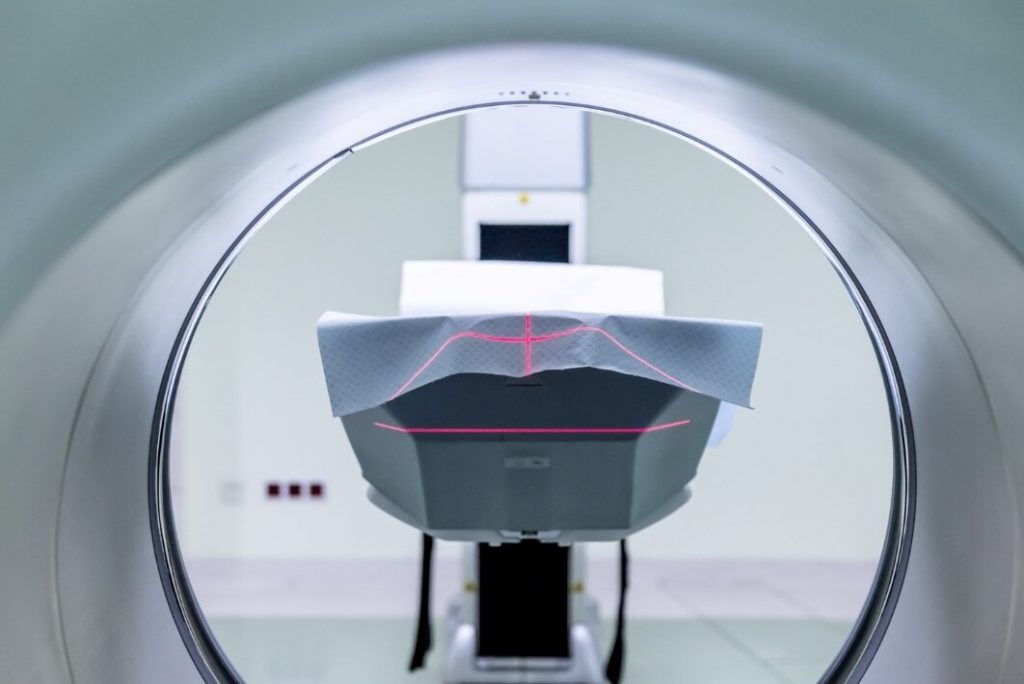
The deep vein thrombosis symptoms, once observed, require immediate medical attention. A doctor may recommend certain diagnostic tests to determine if the condition is present. These tests may include:
D-Dimer Test:
D-Dimer is a chemical substance present in the blood. Its concentration increases in patients with DVT and PE, as well as in conditions associated with inflammation and infection. A positive D-dimer test denotes that the patient has a high risk of DVT or PE. If the D-dimer test comes negative, DVT or PE are unlikely to be the cause of symptoms, and further diagnostic tests for DVT or PE detection are needed.
Duplex Venous Ultrasound:
Another common test to detect DVT or PE is duplex venous ultrasound. It is a non-invasive and widely used for the detection of DVT in suspected patients. The test uses ultrasound waves to detect the blood clot in your veins. It works by creating pictures of the blood flow patterns in your veins, allowing the doctor to see any blockages or clotting. It is a painless and safe test that does not expose you to radiation, making it a preferred test for DVT detection.
Venography:
It is an old method that utilizes a special dye to detect any blood clots that may be partially or completely blocking your veins. The procedure starts with numbing your skin around the neck or the groin. A catheter is inserted in a vein from the numbed area. A special dye (contrast material) is injected into the vein. Imaging is used to detect the blockage and clots, if any. It is rarely used to detect DVT.
Magnetic Resonance Imaging (MRI) or Magnetic Resonance Venography (MRV):
MRI is an imaging technique used to get visuals and pictures of organs and structures inside your body. The MRV is specifically used to visualise veins in your body. These tests provide more information than duplex ultrasounds or CT scans.
Computed Tomography (CT) Scan:
CT scan is another imaging technique used to diagnose DVT and its location inside your body. It uses X-rays to visualise the veins under your skin and get deep vein thrombosis images.
DVT can be treated on an outpatient basis, but some patients may require hospitalisation. There are many treatment options available for deep vein thrombosis management and treatment.
These treatments usually focus on:
The treatment options available to manage and treat DVT include
Let’s discuss these treatment options one by one!
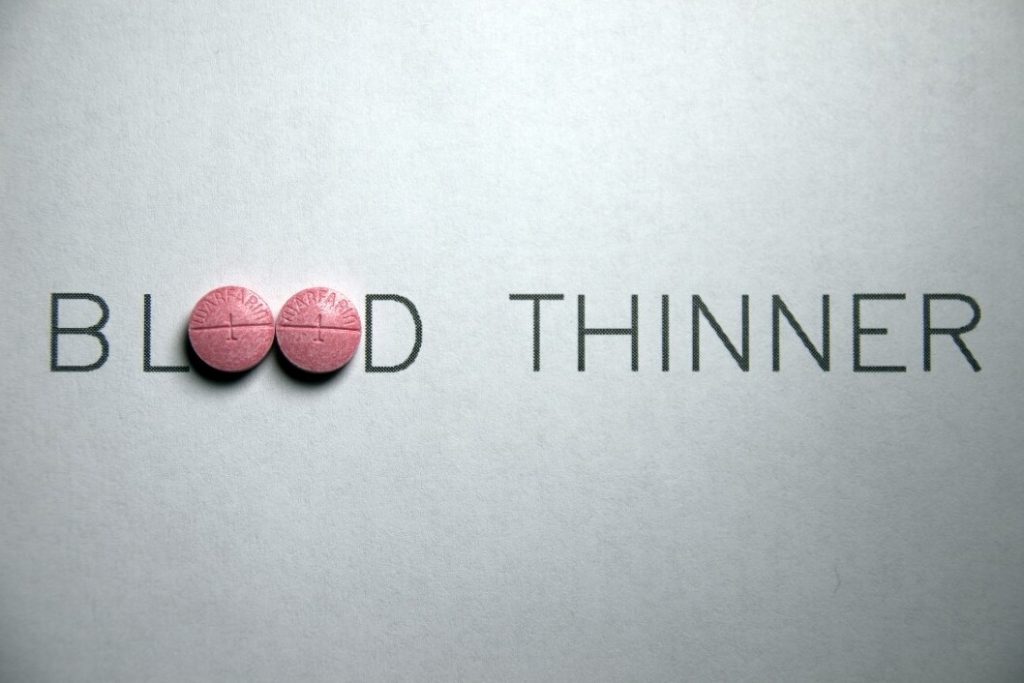
Anticoagulants are the medications that make the blood thin and thus are commonly called as “blood thinners.” Anticoagulants do not necessarily dissolve the existing blood clots but prevent new blood clots from forming.
There are different types of anticoagulants available for deep vein thrombosis management and treatment. Your doctor can prescribe you the best anticoagulant based on your case report and circumstances. The different medications that your doctor may prescribe you may include warfarin, heparin, injectable anticoagulants, oral Xa inhibitors, etc. Your doctor will talk about these medications with you and choose the best one for your individual needs.
Anticoagulant therapy usually takes 3-4 months (during this time, the blood clots naturally dissolve) and sometimes may continue for longer periods depending on the severity of the DVT and the risk of future clot formation. It is important to follow your doctor’s recommendations for medication dosage and duration.
Anticoagulants are the primary treatment for managing DVT and are mostly preferred due to the ease of treatment and high success rate. However, the use of anticoagulants may cause side effects. Bleeding is the most common side effect associated with the use of anticoagulants. You must report to your doctor immediately if you notice any excessive bleeding during the course of the medication.
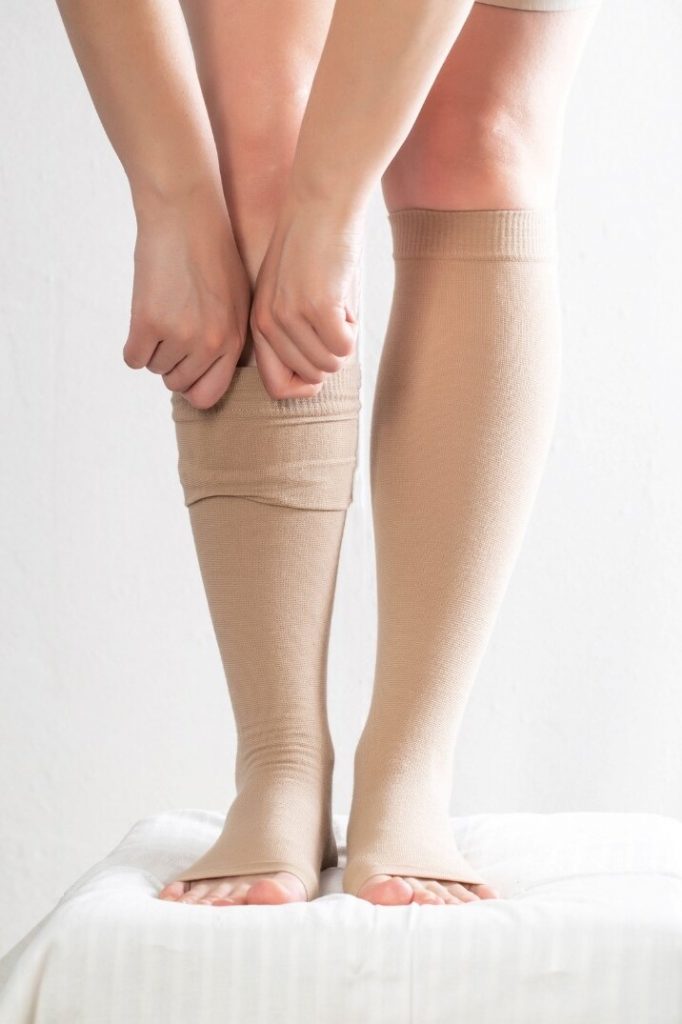
You may have to wear compression stockings (made of graded elastic) to get rid of the swelling and inflammation caused due to DVT. The compression stockings work by putting pressure against the skin and muscles of your leg, which helps in moving the blood through the veins and preventing blood from pooling in one area.
Wearing compression stockings may help relieve the pain and discomfort associated with DVT, reduce the risk of developing post-thrombotic syndrome, and improve the overall quality of life. Many clinical studies have shown that wearing stocking daily from morning to evening (not overnight), improves and provides relief from swelling and leg pain by at least 50 per cent.
Your doctor can guide you on how long you need to wear the stockings and what type of compression stockings are best for you.
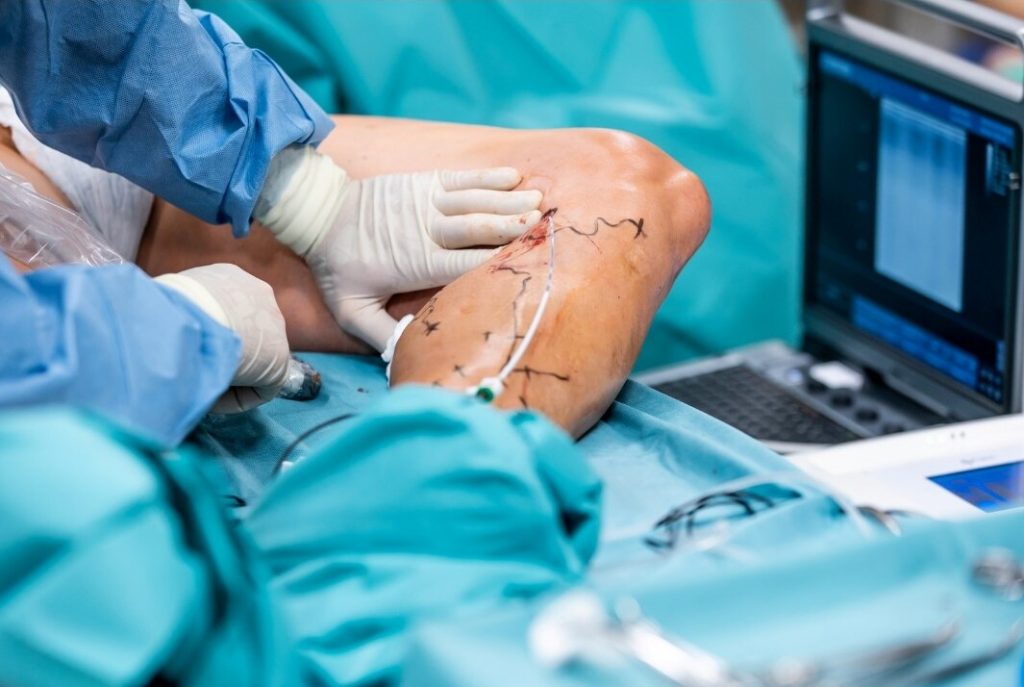
When medications don’t give results, your doctor may suggest you get an inferior vena cava (IVC) filter surgically implanted in your inferior vena cava (the largest vein of your body). This IVC filter prevents the blood clot from reaching the lungs and thus prevents the pulmonary embolism emergency.
During the implantation, the surgeon uses a catheter to put the filter in place, either from the groin (trans-femoral) or through a small incision in your neck (trans-jugular). The surgery is performed under local anaesthesia or moderate sedation, and the patient can resume daily activities shortly after the procedure but should avoid strenuous activities for several weeks.
Although surgery is not the first option for managing DVT and other treatment options like anticoagulants and compression stockings are almost always successful in managing DVT, a surgical procedure may become necessary in complex cases or when other treatments have failed. Your doctor will decide if a surgical procedure is required in your DVT treatment after evaluating your circumstances.
The cost of treating Deep Vein Thrombosis (DVT) in India can vary significantly depending on a number of factors. Typically, the cost ranges anywhere from ₹100,000 to ₹2,50,000. Some of the factors that may impact the cost of treatment include the severity of the condition, the specific treatment chosen, and even the city in which you choose to undergo the treatment.
The treatment cost is expensive, this often causes people to delay seeking medical care, which can lead to severe complications. However, it is important to understand that early detection and treatment of DVT can prevent complications such as pulmonary embolism, post-thrombotic syndrome, and in severe cases, death.
GMoney is one of the best medical loans in India. They provide no-cost EMI options for medical treatments, including treatments for DVT. This means that you can undergo the necessary treatments without worrying about the financial burden weighing down on your shoulders.
GMoney offers flexible repayment options, which can be customized according to your financial capacity, making it easier for you to manage your expenses. With GMoney, you can focus solely on getting better and not worry about the financial aspect of your treatment.
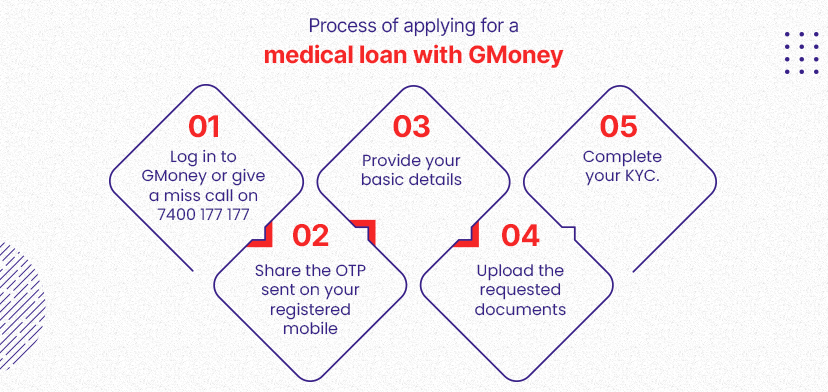
Managing deep vein thrombosis (DVT) requires taking steps to ease symptoms, prevent complications, and assure complete recovery. There are several treatments that a doctor may recommend depending on the severity of the clot, ranging from the use of anticoagulants to the wearing of compression stockings and the possibility of surgical procedures in severe cases.
It is important to seek medical assistance as soon as possible to avoid serious complications such as pulmonary embolism or even death. With affordable medical loan options like GMoney, patients can access the necessary treatments without worrying about the financial burden.
1) Can a hysterectomy cause deep vein thrombosis?
Yes, a hysterectomy may lead to the formation of clots in the pelvis region. However, the surgeons prescribe anticoagulants like warfarin after the surgery to minimize the risk of DVT.
2) What are the warning signs of DVT?
The warning signs of DVT (deep vein thrombosis include:
3) Is deep vein thrombosis serious?
If untreated, yes. The clots formed in DVT may grow larger and cause partial or complete blockage of the vein leading to the pooling of blood in one part of the body. Furthermore, the clots may break off and reach the lungs, this is a medical emergency called a pulmonary embolism.
4) How is deep vein thrombosis cured?
There are multiple treatment options available for the treatment of deep vein thrombosis. The treatment options mainly focus on preventing the formation of new blood clots and preventing the largening of existing clots. The treatment plan usually includes:
5) Can I take a GMoney loan for my deep vein thrombosis treatment?
Yes, you can take a GMoney medical loan for the treatment of deep vein thrombosis. The GMoney loan can help you manage doctor fees, hospitalisation bills and associated medical costs.
6) What is the tenure period of no-cost EMI for GMoney loans?
GMoney loans allow you to repay your medical loan using no-cost EMI payment options within 3 to 18 months.
Disclaimer: THIS WEBSITE DOES NOT PROVIDE MEDICAL ADVICE.
Follow us
Reach us
Mumbai HO
GMoney Pvt. Ltd.
315, 215 Atrium,
Next to Courtyard by Marriott,,
A.K. Road, Andheri East,
Mumbai - 400093
Ph : +91 86570 00105, +91 72089 60444
Quick Links
Bengaluru
GMoney Technologies Pvt. Ltd.
Oyo Work Spaces, Umiya Emporium,
Opposite Forum Mall, Hosur Rd,
Koramangala, Bengaluru,
Karnataka 560029
Ph : +91 89717 34815
Delhi
GMoney Technologies Pvt. Ltd.
Berry Co Works, 1E/3,
Jhandewalan extension,
Next to jhandewalan metro station
gate no. 2 Barakhambha Road,
New Delhi, Delhi 110001
Ph : +91 97116 26832
Pune
GMoney Technologies Pvt. Ltd.
91 Spring Board, Sky Loft,
Creaticity Mall, Off, Airport Rd,
opposite Golf Course, Shastrinagar,
Yerawada, Pune,
Maharashtra 411006
Ph : +91 84250 28758
Chandigarh
GMoney Technologies Pvt. Ltd.
SCO no. 292,
First Floor, Sector 35D,
Chandigarh
Ph : +91 84279 82012
Jaipur
GMoney Pvt. Ltd.
CODESKK Civil Tower,121 122,
Pandit TN Mishra Marg,
Santhosh Nagar, Nirman Nagar,
Jaipur – 302019
Ahmedabad
GMoney Pvt. Ltd.
22nd Floor, B Block,
Westgate By True Value,
Nr. YMCA Club, SG Highway,
Ahmedabad – 380051
Hyderabad
GMoney Pvt. Ltd.
Dwaraka Pride,
Plot no. 4/1, Survey No. 64,
Huda Techno Enclave, Madhapur,
Hyderabad (Telangana) – 500081
Chennai
GMoney Pvt. Ltd.
DBS Business Center, 31A,
Cathedral Garden Rd, Badrikari, Tirumurthy Nagar, Nungambakkam, Chennai, Tamil
Nadu – 600 034
Mumbai HO
GMoney Pvt. Ltd.
315, 215 Atrium,
Next to Courtyard by Marriott,,
A.K. Road, Andheri East,
Mumbai - 400093
Ph : +91 86570 00105, +91 72089 60444
Bengaluru
GMoney Pvt. Ltd.
Oyo Work Spaces,
Umiya Emporium,
Opp. Forum Mall, Hosur Rd,
Koramangala, Bengaluru,
Karnataka - 560029
Ph : +91 72089 60444
Pune
GMoney Pvt. Ltd.
91 Spring Board, Sky Loft,
Creaticity Mall, Airport Rd,
Opp. Golf Course, Shastrinagar,
Yerawada, Pune,
Maharashtra - 411006
Ph : +91 72089 60444
Delhi
GMoney Pvt. Ltd.
Berry Co Works, 1E/3,
Jhandewalan extension,
Gate no. 2 Barakhambha Road,
New Delhi, Delhi - 110001
Ph :
+91 72089 60444
Chandigarh
GMoney Pvt. Ltd.
SCO No. 292,
First Floor, Sector 35D,
Chandigarh - 160022
Ph : +91 72089 60444
Ahmedabad
GMoney Pvt. Ltd.
22nd Floor, B Block,
Westgate By True Value,
Nr. YMCA Club, SG Highway,
Ahmedabad - 380051
Hyderabad
GMoney Pvt. Ltd.
Dwaraka Pride,
Plot no. 4/1, Survey No. 64,
Huda Techno Enclave, Madhapur,
Hyderabad (Telangana) - 500081
Jaipur
GMoney Pvt. Ltd.
CODESKK Civil Tower,121 122,
Pandit TN Mishra Marg,
Santhosh Nagar, Nirman Nagar,
Jaipur - 302019
Chennai
GMoney Pvt. Ltd.
DBS Business Center, 31A,
Cathedral Garden Rd, Badrikari,
Tirumurthy Nagar,Nungambakkam, Chennai,
Tamil
Nadu - 600 034
Pune | Mumbai | New Delhi | Kolkata | Chennai | Navi Mumbai| Bengaluru | Ahmedabad | Nagpur | Hyderabad | Jaipur | Lucknow | Bhopal | Bhubaneswar | Nashik | Indore | Ghaziabad | Kanpur | Amritsar | Vasai | Noida | Gurugram | Chandigarh | Ranchi | Cuttack | Thane | Kalyan | Jalandhar | Kolhapur | Visakhapatnam | Chakan| Greater Noida | Wagholi | Raipur | Panvel | Belgaum | Mohali | Bhiwandi | Talegaon | Coimbatore | Palghar | Mumbra | Sangli | Surat | Durgapur | Ludhiana | Kochi | Agra | Ahmednagar | Ajmer | Akola | Aurangabad | Baroda | Beed | Rewari | Patiala | Vellore | Ranjangaon | Nanded | Nellore | Panipat | Panjim | Madurai | Mysore | Mangalore | Korba | Mathura | Kalaburagi | Jalgaon | Kharar | Guwahati | Kollam | Jamshedpur | Gwalior | Saswad | Solapur | Varanasi | Salem | Sambalpur | Jodhpur | Hubli | Panchkula | Faridabad | Amravati | Ayodhya | Badlapur | Dehradun | Parbhani | Ujjain | Udaipur | Tiruchirappalli | Srinagar | Shimla | Secunderabad | Ratnagiri | Pandharpur | Ananthapuram | Buldhana | Hadapsar | Baramati | Chittoor | Darjeeling | Dhule | Fatehpur | Gandhinagar | Haridwar | Gorakhpur | Jhansi | Kanchipuram | Kartarpur | Kurukshetra | Pondicherry | Prayagraj | Bharuch | Bhusawal | Bathinda | Pathankot | Nandurbar | Niphad | Kolar | Ambala | Kota | Pendurthi | Jabalpur | Palwal | Bhilai | Bhiwani | Bilaspur | Patna | Rohtak | Phagwara | Malegaon | Vijayawada | Bikaner | Chiplun | Darbhanga | Roorkee | Bhor | Rajahmundry | Margao | Alwar | Dhanbad | Bulandshahr | Aluva | Mulshi | Davanagere | Kapurthala | Anantapur | Loni | Latur | Gondia | Chhindwara | Chandrapur | Dharmapuri-TN | Faridkot | Dharwad | Daund | Chaksu | Bareilly | Kakinada | Haldwani | Doddaballapur | Dindori-MH | Bagru | Kudus | Kozhikode | Gurdaspur | Bokaro | Berhampur | Batala | Barrackpore | Ramgarh | Meerut | Bassi | Dera Bassi | Howrah | Karjat Raigarh | Thiruvananthapuram | Bheemunipatnam | Ambegoan | Allahabad | Aligarh | Alappuzha | Tirupathi | Thoppumpady | Srikakulam | Siliguri | Rourkela | Mirzapur | Gadag | Bellary | Tumkur | Sonipat | Hoshangabad | Junnar | Jalna | Hisar | Karnal | Kottayam | Muzzafarnagar | Ramnagara | Thrissur | Bahadurgarh | Balasore | Baraut | Dhar | Ernakulam | Gadhinglaj | Chikodi | Vaniyambadi | Kamothe |